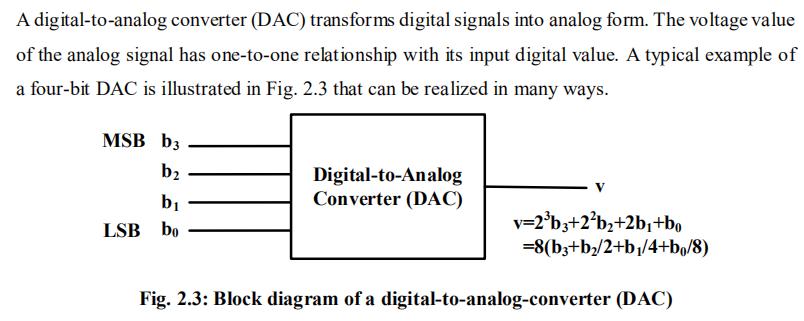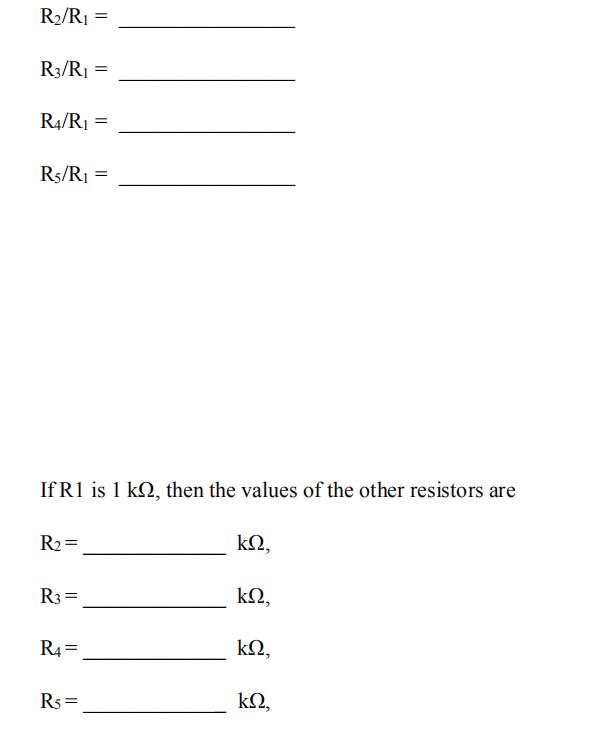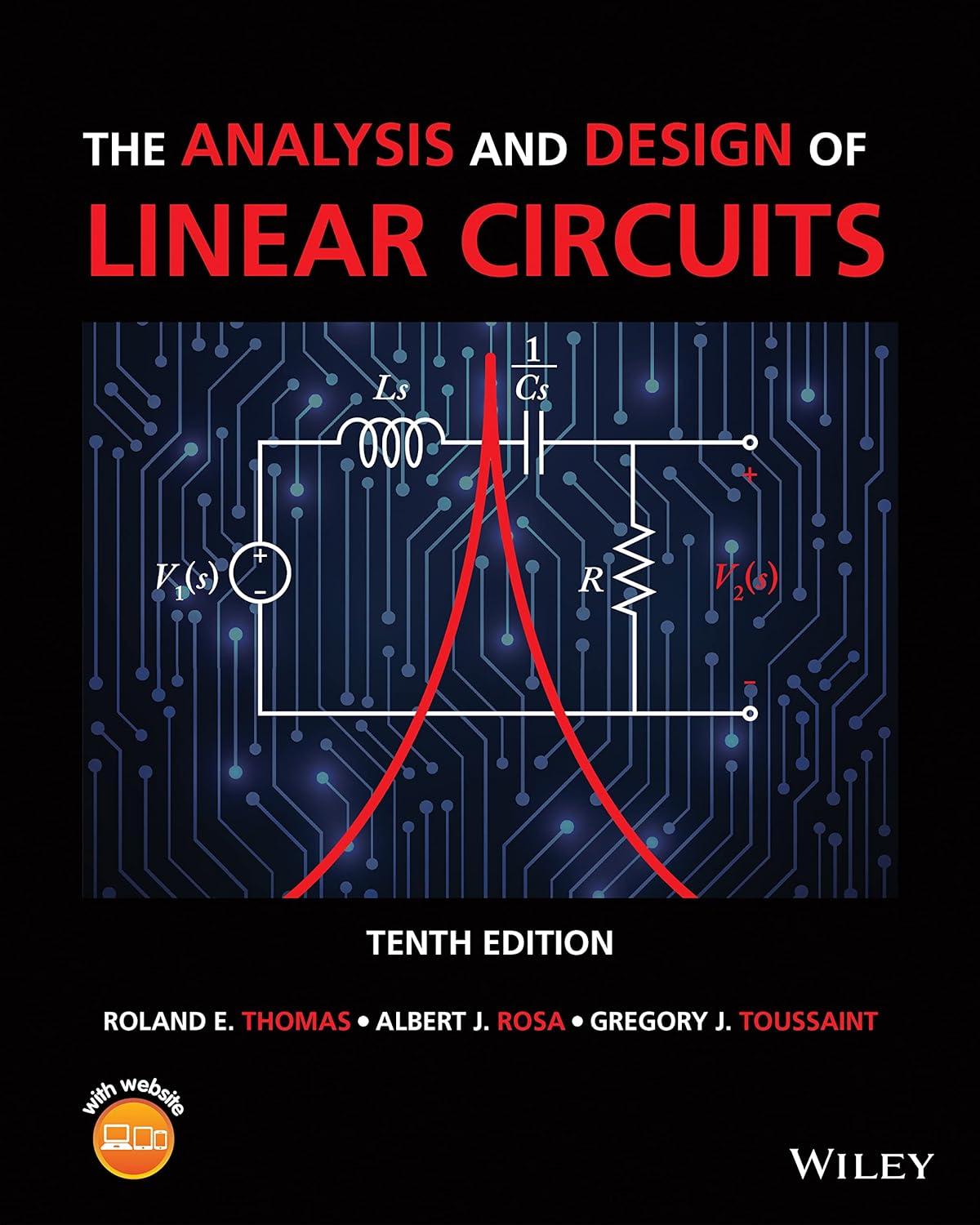Answered step by step
Verified Expert Solution
Question
1 Approved Answer
A digital-to-analog converter (DAC) transforms digital signals into analog form. The voltage value of the analog signal has one-to-one relationship with its input digital




A digital-to-analog converter (DAC) transforms digital signals into analog form. The voltage value of the analog signal has one-to-one relationship with its input digital value. A typical example of a four-bit DAC is illustrated in Fig. 2.3 that can be realized in many ways. MSB b3 b2 b Digital-to-Analog Converter (DAC) v=23b3+22b2+2b1+bo LSB bo =8(b3+b2/2+b1/4+b0/8) Fig. 2.3: Block diagram of a digital-to-analog-converter (DAC) A simple realization of DAC using op-amp is shown in Fig. 2.4 where the input voltages are weighted according to the magnitudes of their place values and added together. The least significant bit (LSB) and the most significant bit (MSB) with their corresponding input voltage terminals are shown clearly. Note: DAC designed for 5V inputs and step output=10V/16=0.625V V V2 V3 V4 ww R5 R4 MSB w R +Vcc R3 R 2 7 6 LSB 741 3 3 + 4 Vo -Vcc Fig. 2.4: Digital-to-analog-converter (DAC) using op-amp Derive an expression for the output voltage Vo and the ratio of the resistors values Ri/R (i=2 to 5) such that the output voltage Vo is proportional to the analog value of the input digital number. For this purpose the factor of 8 can be ignored in the output voltage in Fig. 2.3. The DAC output Vo in Fig. 2.4 can be modeled as Vo = -(V1+V2/2+V3/4+V4/8). Vo = R2/R1 = R3/R = R4/R = R5/R = If R1 is 1 k, then the values of the other resistors are R2= , R3= , R4= , R5= .
Step by Step Solution
There are 3 Steps involved in it
Step: 1

Get Instant Access to Expert-Tailored Solutions
See step-by-step solutions with expert insights and AI powered tools for academic success
Step: 2

Step: 3

Ace Your Homework with AI
Get the answers you need in no time with our AI-driven, step-by-step assistance
Get Started


